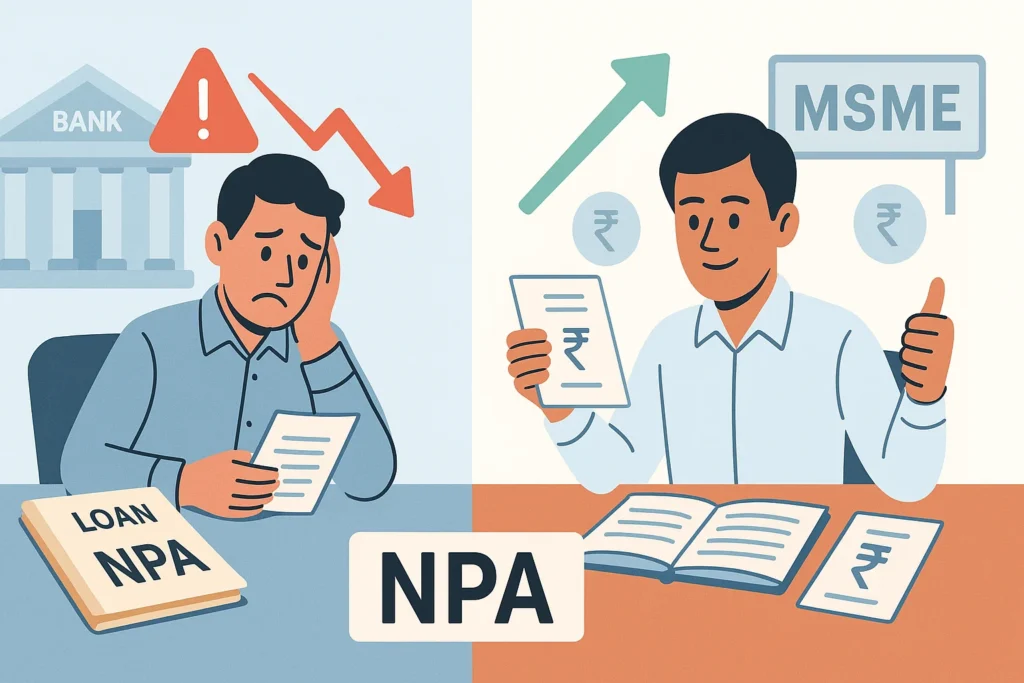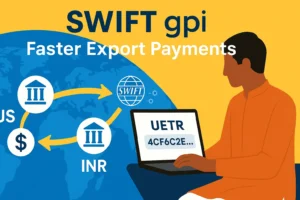
In the financial world, non performing assets (NPA) have become a serious concern for both banks and business owners. For the MSME sector, which plays a crucial role in India’s economy, the rise in bank non performing assets is more than just a statistic—it’s a warning signal.
What Are Non Performing Assets?
A non performing asset (NPA) is a loan or advance for which the borrower has failed to make interest or principal payments for 90 days or more. When this happens, the loan is classified as a bank non performing asset, and both the lender and borrower suffer.
High levels of NPAs affect the banking sector’s ability to lend, tighten credit norms, and reduce overall economic growth—particularly impacting small and medium businesses.
The Impact of NPAs on MSMEs and Lenders
For MSMEs, bank credit is often a lifeline. However, the rise in non performing assets has led to stricter credit policies by banks. Many genuine businesses suffer due to the irresponsible behavior of a few.
On the lending side, banks are forced to allocate higher provisions for NPAs, which limits their capacity to issue new loans and increases their operational stress. In turn, this affects growth financing for other deserving entrepreneurs.
You may also like:diffference between cheque bounce and cheque return
A Personal Commitment to Financial Discipline
As an MSME entrepreneur myself, I’ve always taken pride in paying my loans on time. There was a time when my business faced a major downturn—sales dropped, overheads piled up, and I was dangerously close to defaulting. But through proper financial planning, timely communication with the bank, and sheer determination, I managed to stay afloat.
I was never declared an NPA—because I understood that a loan is classified as a non performing asset only after three consecutive missed repayments. I made it a point to clear my dues, even if it meant personal sacrifices.
Download the defination of NPA or non performing assets from msme.gov.in website
When Carelessness Turned into Crisis: Real-Life Examples
Unfortunately, not all my peers acted with the same discipline. A few friends of mine who started promising MSME ventures became non performing assets due to carelessness and poor financial management. Despite repeated warnings, they delayed EMIs, ignored follow-ups from banks, and assumed they could “settle later.”
One friend, for instance, diverted his working capital loan for personal use, fell behind on payments, and eventually his account turned into an NPA. Now, not only has he lost access to future credit, but his credit score is also damaged for years to come.
Another acquaintance failed to maintain basic cash flow management. He missed three consecutive EMIs, and what was once a thriving trading business is now shut, burdened under legal notices and a stained banking record.
These examples are reminders that becoming an NPA doesn’t happen overnight—it happens due to continued negligence.
Why Paying On Time Is the Best Business Strategy
- You build long-term credibility with your bank.
- Your credit score remains strong.
- You become eligible for future funding and government schemes.
- Most importantly, you avoid legal, emotional, and financial stress.
Timely payments have given me peace of mind, opportunities for growth, and a strong relationship with my bank—benefits no short-term gain can replace.
Final Thoughts
The rising number of bank non performing assets is a red flag—not just for financial institutions, but for the MSME ecosystem as a whole. Let my experience be a guiding example: while hardships are unavoidable in business, discipline and honesty in repayments will protect your future.
If you are an MSME owner, I urge you to stay cautious, responsible, and focused. Don’t allow yourself to fall into the NPA trap.
Be sincere. Be smart. Pay on time. Don’t become a non performing asset.
If this post helped you understand NPAs better, please share it with your network and encourage more responsible entrepreneurship.
✍️ About the Author
Tabrez is a business storyteller and researcher passionate about MSME growth, trade, and smart investing. Through Business Zindagi, he shares real-world lessons and personal experiences to help beginners navigate business and finance with confidence.




